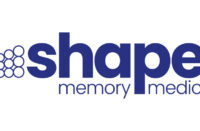PARK CITY, Utah–(BUSINESS WIRE)–The United States Patent & Trademark Office (USPTO) issued two new patents today for the GPX Embolic Particle device, a biocompatible catheter delivered embolic technology designed for use in arteries and veins. A scientific presentation of this vascular embolic device titled GPX: A New Proprietary In Situ Setting Embolic Agent that Combines the Benefits of Coils, Gel-Beads, and Other Embolics is scheduled at the 2018 Society of Interventional Radiology (SIR) conference in Los Angeles, California for Wednesday, March 21, 2018 at 3:54pm PT.
“The USPTO issued three patents on GPX in 2018,” stated David Blossom, President of Fluidx Medical Technology. “We created GPX to solve a number of unmet patient needs in therapeutic embolization. The data to be presented at SIR confirms GPX can be delivered through a variety of off-the-shelf catheters with improved control, precision, flexibility, and utility. Clinicians are particularly interested in GPX’s inability to adhere to catheters and/or accidentally glue a catheter into a patient’s body.”
Therapeutic catheter delivered embolization is performed to stop or slow arterial or venous blood flow into certain organs or anomalies to control bleeding; treat aneurysms; seal arterial venous malformations; selectively block blood flow into specific organs and conditions (prostate, uterine fibroids…etc.); and/or de-vascularize certain tumors to starve them of blood supply.
“The patents issued today cover many anticipated arterial and venous uses for the GPX Embolic Particle device. This intellectual property specifically covers GPX’s use with reinforcing components for additional x-ray radiopacity and/or viscosity as well GPX’s use without such components where x-ray radiopacity and reinforcement are not needed,” Mr. Blossom continued. “We are excited about these new patents and GPX’s potential to help patients. GPX is non-cytotoxic, easy to visualize under fluoroscopic x-ray, does not stick to catheters, and deploys on target through small and large catheters.”
Embolic devices include particles, coils, and liquids/glues. Particles, sometimes referred to as “beads” or “gel- beads,” are generally small polymer spheres injected thorough catheters, flow downstream with the blood flow, and embolize large spaces. But, particles are hard to control, sometimes unintentionally flow into non-target organs, typically are not radiopaque, and do not allow the clinician to create a plug.
Metallic coils can create a plug to occlude flow, but lack precision, sometimes perforate the vessel, and often require numerous expensive deployments to occlude. Liquid embolics, including “glues,” have advantages for certain procedures, but are associated with cytotoxicity; vascular inflammation; clumping; in-vivo polymerization and precipitation; and accidental catheter entrapment in the body that can be catastrophic for the patient.
GPX Embolic Particles are developed by Fluidx Medical Technology based in Park City, Utah, US and foreign patents issued and pending. GPX is under development and not FDA cleared at this time.
Contacts
Fluidx Medical Technology Carmen Aguilera, 1-954-534-9345 info@fluidxmedical.com






